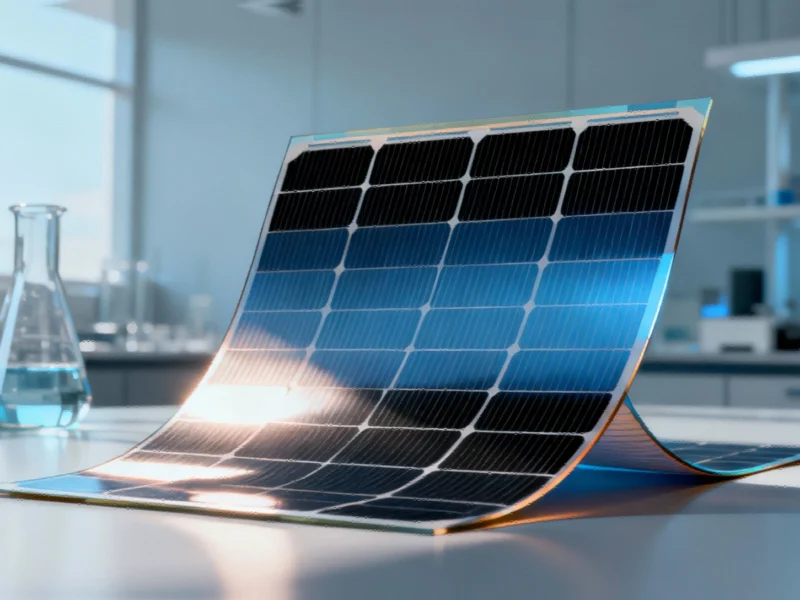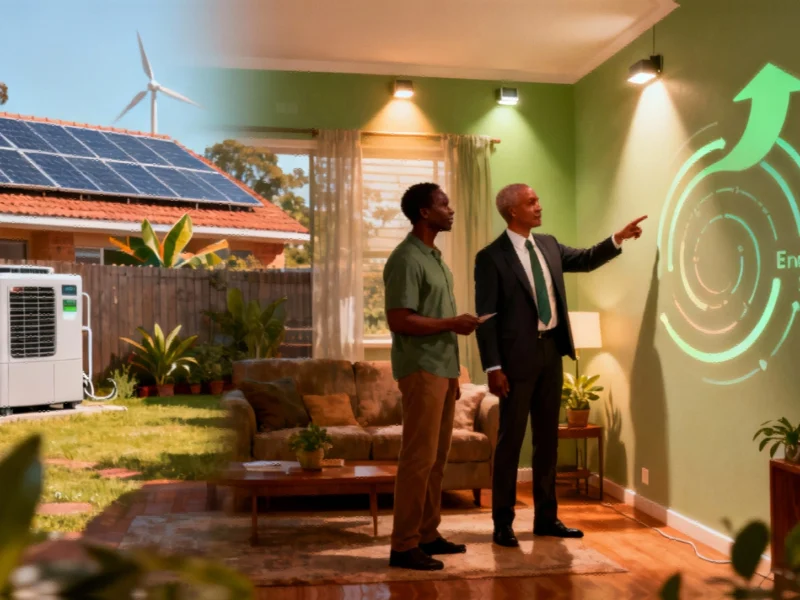European Solar Innovation Reaches Midpoint Milestones
According to reports from the Horizon Europe-funded PEARL project, researchers have made significant progress toward developing next-generation flexible perovskite solar cells with carbon electrodes. Sources indicate the consortium has achieved over 21% efficiency on flexible substrates, bringing them closer to their 25% target efficiency while addressing stability challenges that have previously limited commercial adoption.
Breakthrough Technology and Manufacturing Approach
The project focuses on developing flexible perovskite solar cells as a high-efficiency, low-cost alternative to conventional silicon-based photovoltaics. Analysts suggest that while perovskite materials match silicon in efficiency potential, their stability has remained a concern. The PEARL consortium reportedly addresses this through innovative carbon electrodes and advanced encapsulation techniques.
Manufacturing processes represent another key innovation, according to project documentation. While silicon requires energy-intensive fabrication, the consortium utilizes roll-to-roll techniques that enable cost-effective production of lightweight, flexible solar modules. Partners including Fraunhofer FEP and TNO are scaling these processes using pilot-scale infrastructure.
Consortium Achievements and Technical Progress
At the project’s midpoint, reports confirm several significant technical achievements. Researchers have developed solar cells exceeding 21% efficiency on flexible PET substrates, while partners have created larger 36cm² modules with 4.5% power conversion efficiency. The consortium has also demonstrated protective encapsulation that maintains stability for over 2,000 hours under demanding damp-heat conditions of 85°C temperature and 85% humidity.
Dr. Riikka Suhonen, PEARL Project Coordinator at VTT, stated that these achievements “bring us firmly within reach of our 25% target – paving the way to low-cost, high-performance solar modules for applications from building-integrated photovoltaics to the Internet of Things.”
Sustainability and Environmental Impact
Initial life cycle assessments reportedly show that the combination of carbon electrodes, recycled PET substrates, and green energy can reduce the carbon footprint by more than 50% compared to conventional solar technologies. The project has also developed processes to recover valuable materials including lead and cesium from production waste, addressing environmental concerns while improving resource efficiency.
Market Applications and Future Development
The project targets applications in building-integrated photovoltaics and power sources for Internet of Things devices, where flexible, lightweight solar technology offers significant advantages. As the project enters its second half, researchers will continue optimizing manufacturing processes and testing larger modules for outdoor applications. The consortium aims to establish Europe’s leadership in flexible perovskite photovoltaic technology through optimized module designs and pilot-scale production protocols.
According to project documentation available through the official PEARL website, the three-year initiative involves ten European partners including universities, research organizations, and industrial partners. The diverse consortium brings complementary expertise in materials science, manufacturing scale-up, and sustainability assessment to advance this promising solar technology toward commercial viability.
This coverage follows other technology developments including recent AI hardware advancements and comes amid growing interest in critical mineral resources essential for clean energy technologies. The solar technology sector continues to evolve alongside other industrial computing sectors, including AI automation platforms and financial technology developments.
This article aggregates information from publicly available sources. All trademarks and copyrights belong to their respective owners.



